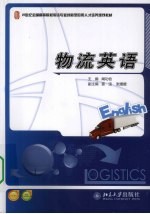
- 作 者:阚功俭编著
- 出 版 社:北京市:北京大学出版社
- 出版年份:2010
- ISBN:9787301168073
- 标注页数:268 页
- PDF页数:279 页
请阅读订购服务说明与试读!
订购服务说明
1、本站所有的书默认都是PDF格式,该格式图书只能阅读和打印,不能再次编辑。
2、除分上下册或者多册的情况下,一般PDF页数一定要大于标注页数才建议下单购买。【本资源279 ≥268页】
图书下载及付费说明
1、所有的电子图书为PDF格式,支持电脑、手机、平板等各类电子设备阅读;可以任意拷贝文件到不同的阅读设备里进行阅读。
2、电子图书在提交订单后一般半小时内处理完成,最晚48小时内处理完成。(非工作日购买会延迟)
3、所有的电子图书都是原书直接扫描方式制作而成。
Chapter 1 Introduction to Logistics Management 1
1.1 What is Logistics 2
1.1.1 Brief History of Logistics Emergence 2
1.1.2 Origins and Definition of Logistics 2
1.1.3 Recognizing the Boundary of Logistics 4
1.1.4 Other Types of Logistics 6
1.2 Mission of Logistics Management 8
1.2.1 Logistics Management Provide Competitive Advantage 8
1.2.2 Gaining Competitive Advantage through Logistics 10
1.2.3 The Mission of Logistics Management 11
1.3 The Changing Logistics Environment 13
1.3.1 The Customer Service Explosion 13
1.3.2 Time Compression 14
1.3.3 Globalization of Industry 15
1.3.4 Organizational Integration 16
1.3.5 The New Rules of Competition 16
1.4 Building the Logistics Network of the 21st Century 19
1.4.1 Logistics Network Building with E-business Development Framework 19
1.4.2 Factors in Optimizing a Logistics Network 21
Chapter 2 Supply Chain Management 29
2.1 Introduction to Supply Chain Management 30
2.1.1 Definition of Supply Chain Management 30
2.1.2 Differences between Logistics and Supply Chain Management 31
2.1.3 Supply Chain Management Process 32
2.1.4 Importance of an Effective Supply Chain Management 33
2.1.5 Supply Chain Management Eras 34
2.2 Principles of Supply Chain Management 36
2.3 Methods Concerning Supply Chain Management 39
2.4 Developing Supply Chain Systems 43
2.5 Supply Chain Business Process Integration 48
Chapter 3 Procurement and Supplier Management 56
3.1 The Definition and Role of Procurement 57
3.1.1 Definition of Procurement 57
3.1.2 The Strategic Role of Purchasing 59
3.2 Purchasing Management 61
3.2.1 Purchasing Research and Planning 61
3.2.2 Measurement and Evaluation of Purchasing Performance 62
3.3 Supplier Selection and Evaluation 64
3.3.1 Importance of Supplier Selection and Evaluation 64
3.3.2 Procedures of Supplier Evaluation 65
3.4 Supplier Relationship Management 66
3.4.1 Definition of Supplier Relationship Management 66
3.4.2 Types of Relationships 67
3.4.3 The Partnership Model 69
Chapter 4 Warehousing and Distribution Management 77
4.1 Introduction to Warehousing and Distribution Operation 78
4.1.1 Definition of Some Terms in Warehousing and Distribution Operation 78
4.1.2 Functions of Warehousing and Distribution Operation 79
4.1.3 Value of Warehousing and Distribution Operation 81
4.1.4 Objective of Warehousing and Distribution Operation 82
4.1.5 Trends and Issues of Warehousing and Distribution Operation 82
4.2 Warehousing and Distribution Operation Facility Activities 84
4.2.1 Objectives of Warehousing and Distribution Operation Facility Activities 85
4.2.2 Pre-Order-Pick Activities 85
4.2.3 Pick(Order-Piek)Activity 88
4.2.4 Post-Order Pick Activity 88
4.3 Warehouse and Distribution Facility Layout 91
4.3.1 Purpose of Warehouse Facility Layout 91
4.3.2 Objective of Warehouse Facility Layout 92
4.3.3 Facility Layout Fundamentals 92
4.3.4 Facility Layout Principles 93
4.3.5 Facility Layout Philosophies 94
4.3.6 How to Increase Storage Space 100
Chapter 5 Transportation Management 106
5.1 Introduction to Transportation 107
5.1.1 Importance of an Effective Transportation System 107
5.1.2 Transportation Management as a Source of Competitive Edge for Enterprises 108
5.2 Modes of Transport 109
5.2.1 Rail Transport 110
5.2.2 Road Transport 111
5.2.3 Water Transport 112
5.2.4 Air Transport 118
5.2.5 Pipeline Transport 122
5.2.6 Containerization 124
5.2.7 International Multimodal Transportation 127
5.3 Transportation Economics 129
5.3.1 Transportation Characteristics 129
5.3.2 Principles of Transportation 131
5.3.3 Transportation Pricing 133
Chapter 6 Information Techmology in a Supply Chain 140
6.1 The Role of IT in a Supply Chain 141
6.2 Brief History of Information System Connectivity 145
6.3 The Supply Chain IT Framework 147
6.3.1 Customer Relationship Management 148
6.3.2 Internal Supply Chain Management 150
6.3.3 Supplier Relationship Management 151
6.3.4 The Transaction Management Foundation 151
6.4 Supply Chain IT in Practice 152
6.5 The Future of IT in the Supply Chain 154
Chapter 7 International Logistics 162
7.1 International Trade and International Logistics 163
7.1.1 Historical Development of International Logistics 163
7.1.2 Definition of International Logistics 164
7.1.3 Features of International Logistics 165
7.1.4 Government's Interest in International Logistics 168
7.2 Components of International Logistics Management 169
7.2.1 International Transportation 169
7.2.2 International Insurance 171
7.2.3 Packaging 175
7.2.4 Terms of Payment 176
7.2.5 Trade Terms 178
7.2.6 Customs and Customs Clearance 180
7.2.7 Inventory Management 181
7.3 International Logistics Infrastructure 181
7.3.1 Free Trade Zone 182
7.3.2 Ports 184
7.4 International Logistics Intermediaries and Logistics Alliances 184
7.4.1 Main International Logistics Intermediaries/Facilitators 185
7.4.2 International Logistics Alliances 186
Chapter 8 Contract and Logistics Documentation 191
8.1 Introduction to Documentation 192
8.2 Contract 193
8.2.1 Introduction to Contract 193
8.2.2 Logistics Contract 194
8.3 Main Logistics Documentation 197
8.3.1 Bill of Lading 197
8.3.2 Sea Waybill 204
8.3.3 Charter Party 205
8.3.4 Air Waybill 209
Chapter 9 Logistics Telecommunication 236
9.1 Telex 237
9.1.1 Introduction to Telex 237
9.1.2 Examples of Telex 240
9.2 Fax 241
9.2.1 Introduction to Fax 241
9.2.2 Examples of Fax 242
9.3 E-mail 244
9.3.1 Introduction to E-mail 244
9.3.2 Examples of E-mail 246
Appendix:A Bird's View of Best Practices of Selected World Famous Logistics Companies 255
References 267
